National Puppy Day was created in 2006 by animal behaviorist and pet lifestyle expert Colleen Paige. She wanted to celebrate the magic that puppies bring to our lives, as well as educate the public about puppy mills and promote adoption. National Puppy Day is celebrated annually on March 23rd. Read on to learn more, including 10 ways you can celebrate puppies of all breeds and ages. But first, let’s remember the purpose of the event and raise a little awareness.
What’s the Deal with Puppy Mills?
A puppy mill is a commercial dog breeding operation where profit is given priority over the well-being of the dogs. They often keep dogs in overcrowded and unsanitary conditions and puppies from these mills may have behavioral and health issues. These operations contribute to the overpopulation and suffering of animals, and to the euthanasia of healthy adoptable animals in shelters. For animal lovers, putting an end to the practice of puppy mills is a high priority. And it’s something we can all contribute to by raising awareness, making ethical decisions about where we find our own dogs, and encouraging others to do the same.
The Adoption Option
Adopting a puppy from a shelter or rescue rather than buying one from a breeder or pet store has several benefits. It reduces the cash flow to puppy mills, via certain pet stores or unscrupulous dealers. Your dog will likely already be spayed or neutered, health-screened, and may already have its vaccinations, saving you time and money. Shelters often have a good sense of a puppy’s behavior, personality, and specific needs, which can help you choose a pet that will fit your family and lifestyle. Adopting a puppy actually can save two dogs’ lives – yours, and another who can now have the newly available shelter space rather than being euthanized.
If You Choose to Buy a Dog
Some people choose to purchase from a breeder rather than rescue a dog from a shelter, for many different practical and personal reasons. Choosing a dog is a personal matter. If you prefer to purchase, here are a few suggestions of how to do so ethically:
- Avoid pet stores or purchasing directly from puppy mills. Although this rescues an individual animal, it continues pumping money into a system that is abusive to dogs. This will perpetuate the problem.
- Research the breed you are interested in and seek out a responsible breeder. Consider how many years they have been in business, their experience, and qualifications. If possible, contact other customers to hear about their experience with this breeder.
- Always buy in person. Examine the facilities where the dogs are kept. Make sure they are clean and spacious, and the dogs seem healthy and well-adjusted. Meet the doggy parents of the new puppy, if possible, to get a sense of their personalities, alertness, and general health.
- Ask about the return policy. No one wants to return a beloved pet, but it may be a red flag if your breeder doesn’t have a return policy.
10 Ways to Celebrate National Puppy Day!
There are no traditions yet for how to celebrate National Puppy Day, so let your love and creativity run amok! To get you started, here are 10 ways to celebrate:
1. Support Puppy Adoption!
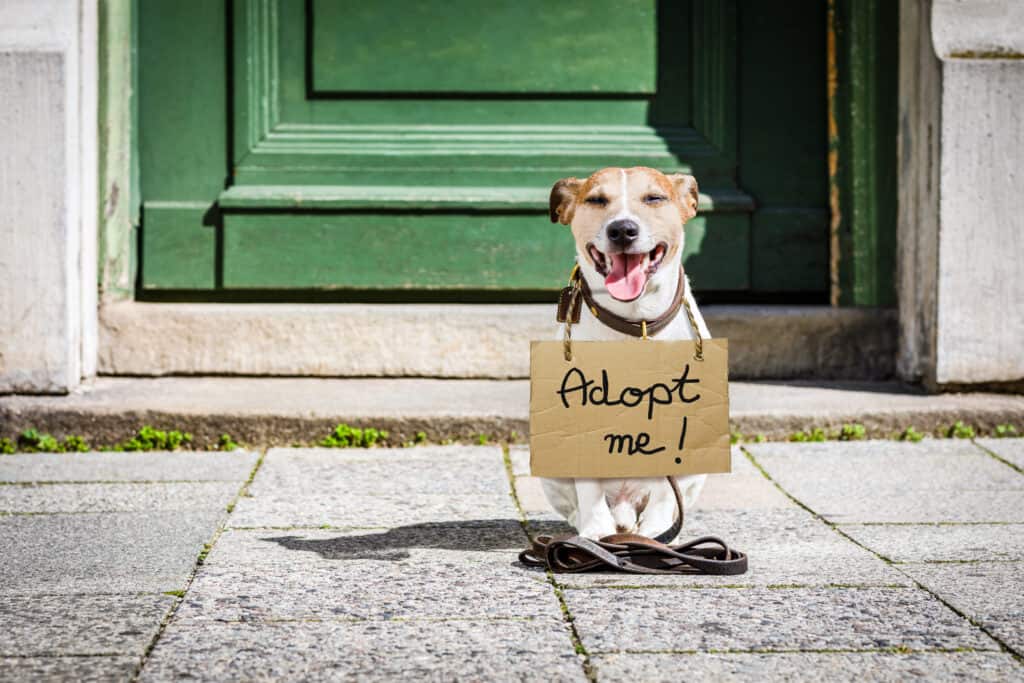
Adopt a pup yourself or encourage a friend to do so!
©iStock.com/damedeeso
Adoption and rescue-related activities are an excellent way to celebrate National Puppy Day. Make a positive impact in your local community, while also providing a loving home for a puppy in need. Why not adopt a pup yourself or encourage a friend to do so? Maybe you’d like to browse puppy adoption sites and repost social media links for some worthy dogs.
Another way to support puppy adoption is to donate time or money to your local animal rescue or shelter. Your financial donations will always be welcome, but your impact could multiply if you can get other people in the community to participate as well. For example, you could organize a puppy-themed fundraiser or puppy supply drive for a local shelter or rescue organization. Help gather necessary items and raise awareness about the organization in your community.
Many shelters welcome volunteers. You might help with tasks such as walking dogs, cleaning cages, or participating in fundraising events. Sometimes shelter dogs just need someone to sit with to help them become well-socialized with people. You and the pup might find it relaxing to sit and quietly read a book. What a great volunteer gig!
2. Pamper Your Pup!
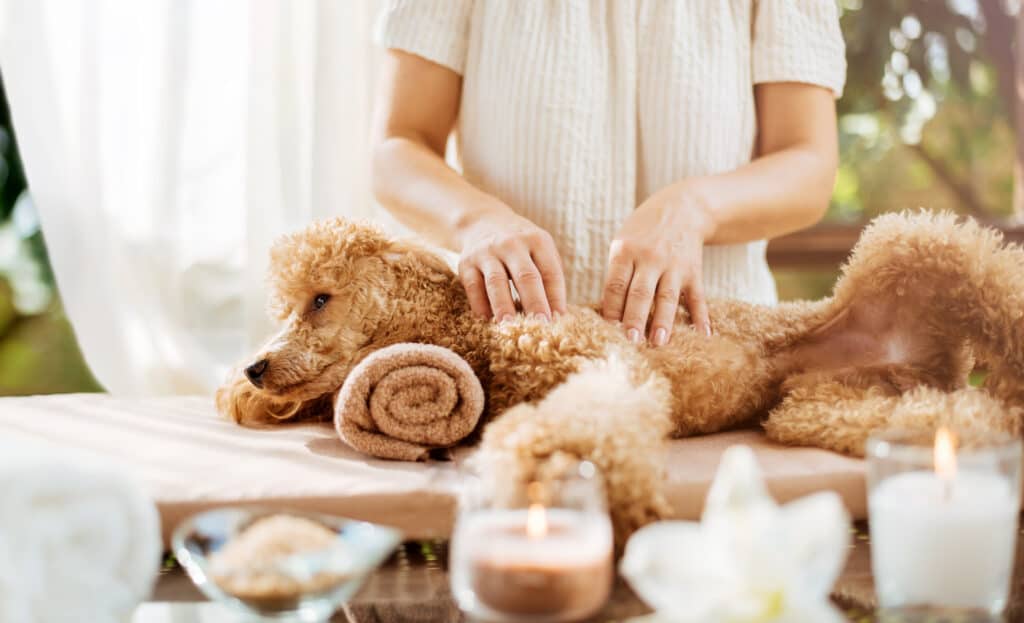
Just like people, puppies enjoy a gentle massage.
©Rasulov/Shutterstock.com
This is your puppy’s day, so concentrate on what your puppy will enjoy. Grooming is an important way to pamper your puppy; it helps to keep their coat shiny and their skin healthy and parasite-free. Some puppies actually like baths and routine grooming activities like ear cleaning, and you might even be able to distract them enough that they don’t quite notice you’re trimming their nails. If your pup has hair that is long or tangled, a gentle combing or trim would be nice. Trim the hair away from their eyes so they can see and check to make sure no stray hairs have gotten into their eyes.
Puppies also enjoy gentle massages and cuddling. Puppies get itchy wearing a fur coat all the time. Gently scratch them all over and see what spots they prefer. The ears, shoulder blades, end of the ribcage, and base of the tail are often sweet spots. Special sleepytime items, like a cozy bed, blanket, or crate pad, can help them feel special and comfortable. Try putting a blanket or towel in the drier for a few minutes to warm it up before naptime. Ah! Heaven!
3. Puppy Playtime!

Certain breeds, like golden retrievers, love playing in water and paddling around!
©Denis Moskvinov/Shutterstock.com
Puppies are built to play but they enjoy different types of play depending on their individual personalities and breed characteristics. For example, a herding or hunting breed might enjoy different games than a dog bred to stay in one place as a guard dog. Smaller and more energetic breeds might be into agility trials. Consider whether a particular game might reinforce undesirable behaviors, such as chewing on your shoes or herding your children. If so, modify the activity or make a different choice.
Some common ways that puppies like to play include:
- Fetch: throw a ball, toy, or stick, and praise them for bringing it back.
- Tug-of-war: pull on a rope, toy, or old t-shirt and enjoy playfully growling at each other. Remember to let puppy win sometimes.
- Hide-and-seek: Help your dog find human friends or other dogs who are hiding. It’s a great chance for them to use their sense of smell.
- Agility training: Teach your doggie to navigate an obstacle course of tunnels, jumps, and weave poles.
- Herding: border collies, Australian shepherds, and other herding breeds like games that simulate herding behavior. Try wandering away from a sealed bag of dog food and let your dog herd you back toward it.
- Chewing: Puppies will chew on anything. Give them safe chew toys but discard old toys regularly if your dog is starting to break pieces off of it.
- Swimming: Some breeds, such as retrievers and water spaniels, love playing in water and paddling around.
- Playing with other puppies: Dogs like to socialize and play with their canine friends; this helps them learn how to interact with other dogs. It will make meeting dogs on your future walks more pleasant for sure.
4. Puppy Projects

Bake homemade dog biscuits using safe ingredients.
©Michael Ebardt/Shutterstock.com
When it comes to crafts and projects related to puppies, there are many options to choose from. One idea is to create a toy for your puppy. Braiding old t-shirts or sewing a stuffing-free “stuffed” animal are simple family-friendly crafts. You could also bake homemade dog biscuits using safe ingredients.
Kids can have fun by choosing a fabric and making a homemade blanket for their furry friend. A puppy-themed scavenger hunt is a fun activity for both kids and pups. Hide treats and let your pup sniff them out with your child’s help.
5. Train That Pupper!
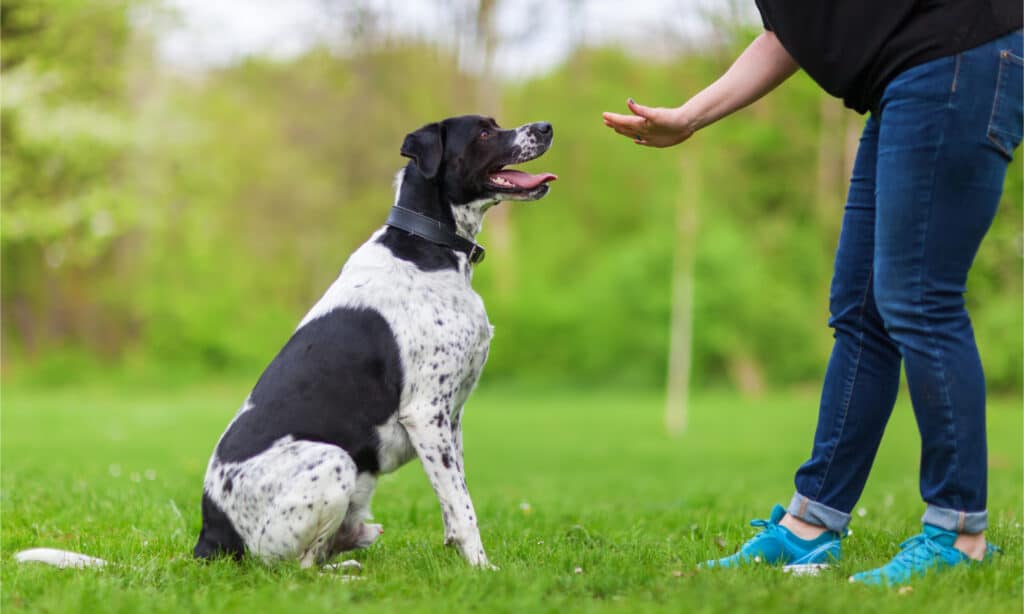
Positive reinforcement involves rewarding puppies with treats, praise, or play for performing a desired behavior.
©Christian Mueller/Shutterstock.com
National Puppy Day is a great opportunity to think about your training goals for your little friend. Teach basic obedience commands such as sit, stay, come, heel, and down. It’s also good to potty train, crate train, and socialize. These goals are important for teaching puppies to behave in a household, as well as how to interact with other dogs and people in a safe way.
There are several different methods that can be used to train puppies. Positive reinforcement involves rewarding puppies with treats, praise, or play for performing a desired behavior. This method is often considered the most effective and humane way to train puppies. Clicker training involves using a small handheld device to mark the exact moment when a puppy performs a desired behavior. The clicker is then followed by a treat or praise.
Leash and collar training is a method that involves using a leash and collar to physically guide a puppy into a desired position or behavior. Crate training involves using a crate or carrier to confine a puppy when it’s not being supervised. The puppy is gradually taught to accept the crate as a safe and comfortable place to be. This is also a recommended approach to housebreaking a young dog.
Socialization is also very important. Exposing puppies to different people, animals, and environments in a controlled and safe way will teach them to cope with new experiences, turning them into well-adjusted and confident adult dogs.
Some puppies take to training more easily than others. Patience and consistency are key, as well as the flexibility to try different approaches. Training is not a “once-and-done” activity but an ongoing process. If you’re having trouble, consider enrolling your pup in classes with a professional.
6. Keep Your Fur Baby Safe and Healthy
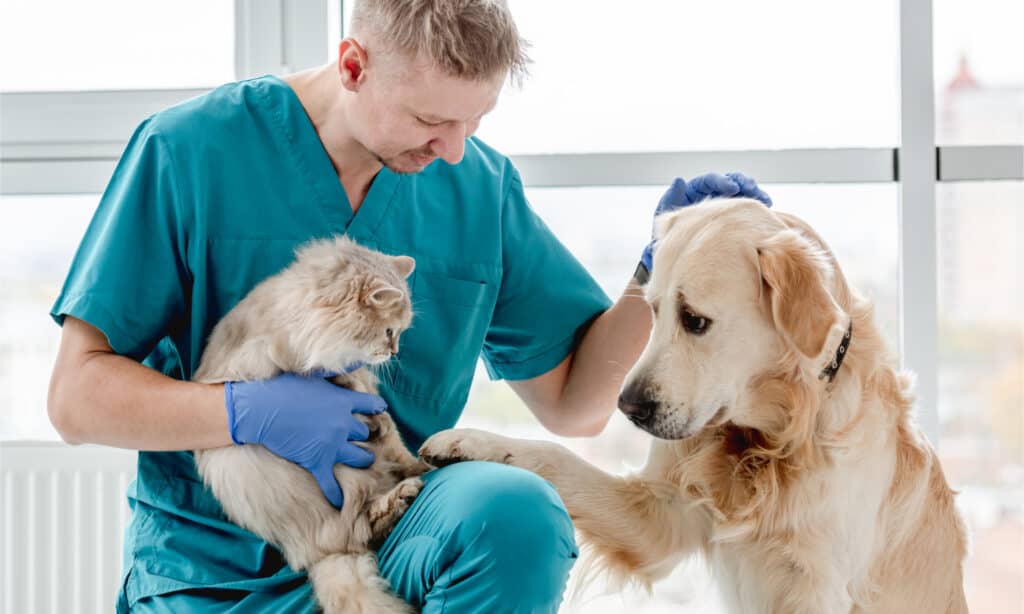
Regular veterinary check-ups are important to ensure that your puppy is healthy and to detect and treat any health problems early on.
©Tatyana Vyc/Shutterstock.com
Puppy Day is a great reminder to make sure you’re taking care of your dog’s medical needs. New puppies have several medical needs, including deworming. Puppies should receive a series of vaccinations to protect them against common diseases, such as parvovirus, distemper, and rabies. Your veterinarian will provide you with a schedule of when your puppy should receive each vaccination. Fleas and ticks can cause itching and skin problems in puppies, so it’s important to use a flea and tick prevention medication as recommended by your veterinarian.
It is important to spay or neuter your puppy to prevent unwanted litters, and to reduce the risk of certain types of cancer and other health issues. Additionally, microchipping is an excellent idea. This involves a small, permanent identification device that is inserted under the puppy’s skin. It can help identify your puppy if it becomes lost. Dental care is also important for puppies as well as adult dogs, as dental problems can lead to other health issues such as heart disease. Brushing your puppy’s teeth regularly and providing appropriate chews can help maintain their dental health, preventing surgical cleanings or extractions later.
Finally, regular check-ups with the vet are vital! Puppies grow fast and need a diet that give them the vitamins and nutrients they need. Your vet will be able to measure your puppy’s development and help you decide on the best dogfood and the right amounts to feed your pet as they grow. Vets can also detect any early warning signs of health problems that might be endemic to your breed.
7. Puppy Friends

Dog parks are also a great place to socialize your dog in a relaxed and supervised environment.
©otsphoto/Shutterstock.com
Socializing your dog with other dogs and people is important so they will interact safely and in a well-mannered way. Puppy training classes are one of the best ways to socialize your dog under the guidance of a trainer who can help you learn the best ways to head off problem behaviors. Dog parks are also great places to socialize your dog in a relaxed environment. Of course, watch your dog closely, because even if they are doing well, they could always encounter another dog that is not as well-socialized and might hurt your pet. You can also socialize your dog by taking them on walks in new neighborhoods and to pet-friendly places of business. You can even invite friends and family members over to your home and form a regular dog-walking group with friends who have dogs.
8. Treats!

Every doggie needs a treat now and then!
©Javier Brosch/Shutterstock.com
Most of us know the way to a puppy’s heart is through its stomach. Every good doggie needs a treat now and then. But don’t overdo it. As a general guideline, treats should not exceed 10% of their daily diet. Pro tip: Trick your puppy into thinking his regular, healthy, and nutritious kibble is a treat. Put less in the bowl at mealtimes and keep a handful in your pocket to reward your good dog!
Besides regular kibble, some of the best types of treats to give a puppy include:
- Small, soft training treats that can be easily broken into pieces. These treats should be low in calories and high in protein to support your puppy’s growth and development. Examples of such treats you may already have in your fridge include boiled chicken, cheese, or small pieces of fruits and vegetables.
- Freeze-dried liver treats, which are high in protein and packed with flavor, are a great reward for training.
- Homemade treats made with natural ingredients, such as pumpkin or sweet potato, are a great option for puppies with food sensitivities or allergies.
Giving puppies scraps of people food is a bad idea. Puppies require a specific and balanced diet that is appropriate for their age, breed, and size. Table feeding can create a nutritional imbalance that can lead to obesity, dental problems, and digestive issues. Additionally, some common foods are toxic to dogs, such as chocolate, grapes, and raisins. Feeding puppies human food can also lead to behavioral problems, like picky eating and begging.
9. TOYS, TOYS, TOYS!
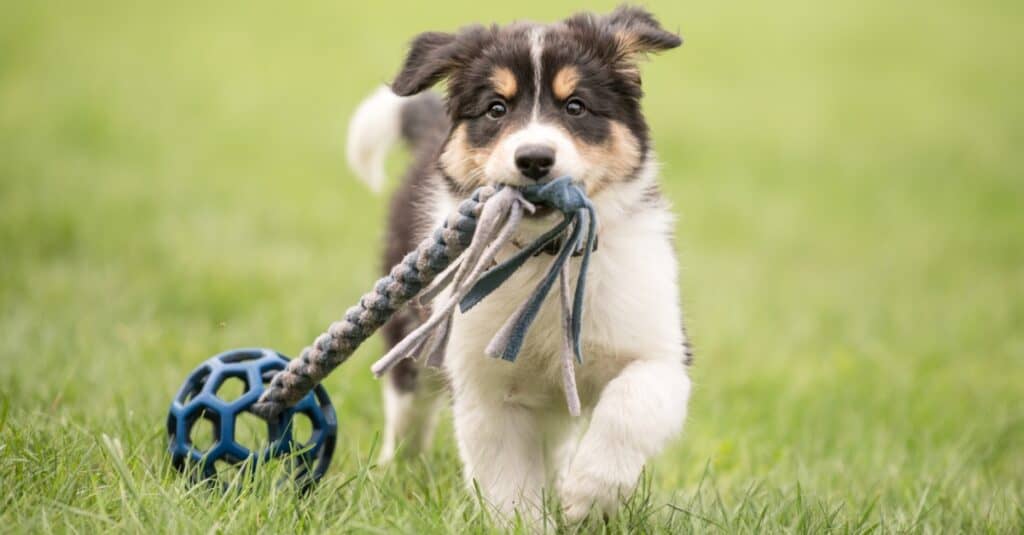
Rope toys are great for teething puppies or a game of tug-of-war.
©iStock.com/K_Thalhofer
Buying a toy for your puppy is super fun! But it’s important to choose toys that are safe and appropriate for their age and size. Also, consider your own sanity. Your puppy may love squeaky toys, but these can wear on a human’s nerves.
Some of the best types of toys to give a puppy include:
- KONG toys can be filled with treats or peanut butter to keep a puppy entertained for long periods of time.
- Rope toys are great for teething puppies or a game of tug-of-war.
- Soft, plush toys are nice for cuddling and comfort.
- Puzzle toys, which can be filled with treats, offer a fun challenge for smart pups.
- Durable rubber toys are excellent for playing fetch. Additionally, they can withstand a puppy’s sharp teeth.
Be sure to supervise your puppy while they’re playing with toys. Replace toys that are worn or damaged to prevent ingestion of unsafe materials.
10. Capture the Memories!
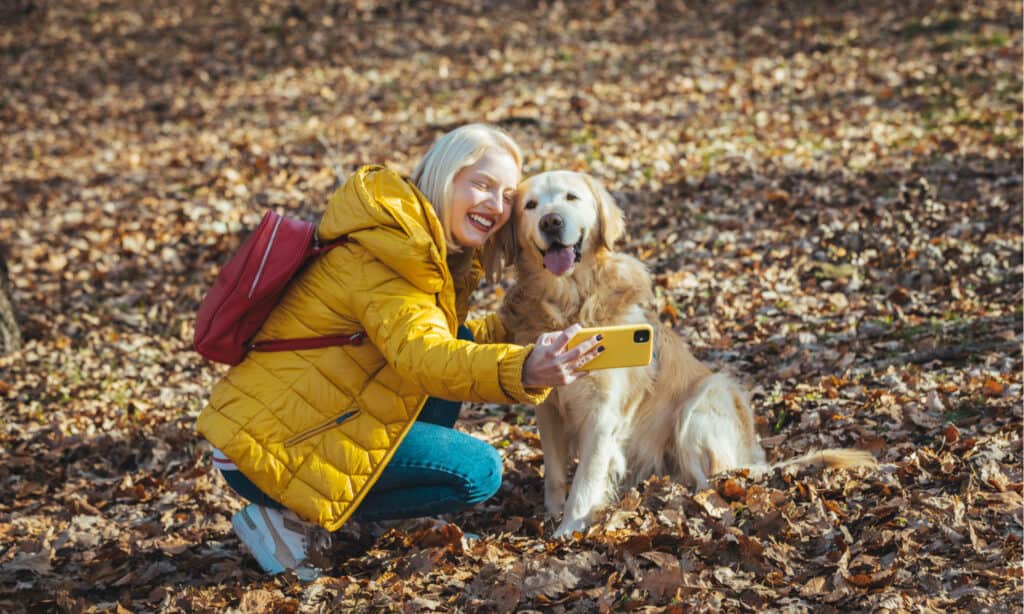
Take lots of photos and videos throughout the years of your dog’s life.
©Dragana Gordic/Shutterstock.com
Take lots of photos and videos, not just on the holiday, but throughout the years of your dog’s life. Capture them playing, sleeping, doing tricks, and obeying (or disobeying) commands. Maybe you’d like to make a memory book filled with photos, your written notes about your puppy, and other mementos like your dog’s paw print.
Keeping a journal is also a good idea to remember all the details of your puppy’s life and growth. For a fun way to see changes over time, use the time-lapse feature on your phone’s camera to document your puppy’s growth. Or you could make a video montage of your photos and video clips set to music.
The photo featured at the top of this post is © iStock.com/smrm1977
Ready to discover the top 10 cutest dog breeds in the entire world?
How about the fastest dogs, the largest dogs and those that are -- quite frankly -- just the kindest dogs on the planet? Each day, AZ Animals sends out lists just like this to our thousands of email subscribers. And the best part? It's FREE. Join today by entering your email below.
Thank you for reading! Have some feedback for us? Contact the AZ Animals editorial team.






